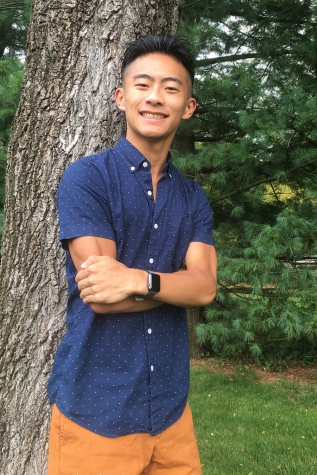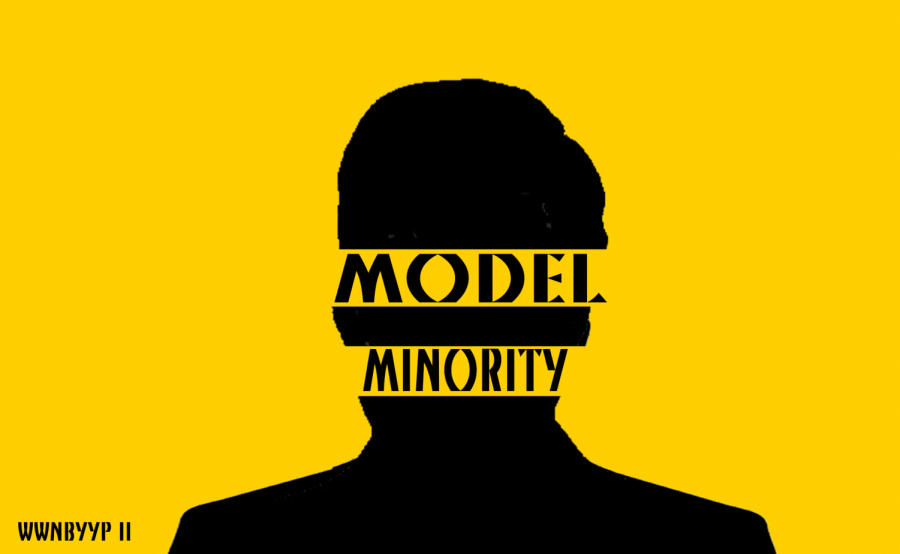We will not be your Yellow Peril: the detriment of the Model Minority Myth
The Model Minority Myth has brought great harm to the Asian American Community by not only applying an unfair standard to Asian Americans, but also serving to omit the issues which Asian Americans face.
Labels aid in categorization, based upon what are, more often than not, surface level attributes and assumptions. Practically every person, place, or thing can fall under a label for better or worse. And for the Asian American community, one label which has come to define us is the “Model Minority.”
Now while the title of “Model Minority” could be perceived as an advantage, supposedly shielding the Asian American community from the same prejudice created by labels applied to other minorities, the stark reality of the myth’s effect on our community is far from a benefit. The Model Minority Myth has opened the floodgates for the trivialization of problems facing Asian Americans, overshadowing them with a veneer of monolithic success and alleged privilege.
The term “Model Minority” was first applied to Asian Americans (specifically Japanese Americans) in research by sociologist William Peterson in 1966. Putting forth the idea that Asian Americans had elevated themselves above so called “problem minorities,” Peterson posited that Asian Americans offered a template for other marginalized groups to find success, despite discrimination.
Alleging inherent qualities such as a propensity to work hard, strong familial bonds, and a diligent non-confrontational nature, the Model Minority Myth proposes not only a general set of traits perceived to be shared by Asian Americans, but the reinforcement of other Asian stereotypes as well.
The very nature of stereotypes seeks to apply a general set of characteristics to a group, and the ideas promoted by the Model Minority Myth go hand in hand with the stereotypes perpetuated about Asian Americans. The myth’s attribution of ubiquitous success among Asian Americans is almost identical to the stereotype of Asian Americans being studious and incredibly successful. The unassuming non confrontational character perpetuated by the myth serves to reflect stereotypes of submissiveness and meekness.
“It just creates microaggression and erases the difference of individuals,” said senior Daisy Jung, who is an immigrant from South Korea. “As I moved to the U.S. a few years ago, I was confused that most Americans I met [made assumptions about me] based on this myth. For them, I should be good at STEM, and I should want to be a doctor, and that made me uncomfortable because I realized they were looking at me [through] a filter.”
Stereotypes like these, as well as the expectations of the Model Minority Myth, serve to limit the potential of Asian Americans and keep us in a box, degrading our capabilities to do anything besides what we are all assumed to be best at.
“I think it’s harmful because it basically puts this pressure on Asian Americans to be this perfect student, perfect citizen; and at the same time, by putting this standard for them, people expect that every single Asian American will fulfill these standards of grades and achievement,” said senior Helena Munoz, who is of Taiwanese and Colombian descent. “It erases the struggle that Asian Americans go through also, because it paints us all as successful when that’s not always true, and not every Asian American family and experience is the same.”
Numbers Don’t Lie
The real world effects of the myth are most clearly seen in the concept of the “Bamboo Ceiling,” which refers to systemic or social barriers that affect Asian Americans in professional areas.
Often a result of stereotypes insinuating that Asian Americans lack necessary social or leadership skills, or of higher expectations compared to their white counterparts based on stereotypes of success, the Bamboo Ceiling limits the professional advancement of Asian Americans by the sole factor of race alone.
Harvard Business Review, for example, found that despite Asian Americans comprising a plurality of white collar workers in Silicon Valley, they were the least likely to be promoted to higher leadership positions.
In fact, Harvard Business Review found similar disparities everywhere from Goldman Sachs to America’s law firms. Goldman Sachs reported that 27% of its workforce was Asian American, though only 11% were in managerial positions, and none were executive officers in 2018. The National Asian Pacific American Bar Association concluded that while Asian Americans comprised 10% of the graduates from the top 30 law schools in the country, they routinely struggled in career advancement.
Disparities such as these were identified as being the consequence of a lack of effort to find or develop leadership and talent, with Asian Americans being left out of initiatives seeking to promote minority groups.
Obscuring the Real Issues
A belief in the monolithic success of Asian Americans also ignores the differing levels of wealth between not only individuals and families, but the different ethnic groups within the Asian American community.
Burmese Americans for example, were reported to have a median household income of $44,400, a value falling short of the national average for all Americans by over $20,000, as reported by Pew Research Center in 2019.
Statistics from the Southeast Asia Resource Action Center, meanwhile, indicated that Cambodian, Laotian, and Hmong Americans experience the lowest rates of college and high school graduation.
Disparities such as these highlight the contrasting levels of success that different Asian American groups have generally found, and demonstrates how the unbending nature of the Model Minority Myth obscures the varied levels of prosperity within our community.
Disputing the issues we raise and brushing aside the racism we continue to face, by perpetuting the belief that our success means we have no right to complain, only enables discrimination against the Asian American community to continue unhindered. Alternatively, this myth allows for our struggles to go unheard and emboldens those who wish to harm our community as they perceive we have no respite from broader society.
“When you’re stereotyping another group, it dehumanizes them and [makes] you think you have an excuse or are enabled to further harm them because you’re already opening the gateway to [harm] by making fun of them and by creating stereotypes,” Munoz said. “So I think that just allowing people to dehumanize and treat Asians as a monolith and acting like everyone is the same…contributes to this perception [where] people think that it’s ok to harm Asians.”
From the previous outbreaks of violence to the current rise in racially motivated attacks facing our community, the denial of our concerns under the belief that our success makes us fine only allows for attacks and harassment to continue.
“[The Model Minority Myth] has been used to silence Asian Americans and paint them as this group that won’t stand up for themselves, who won’t fight back,” said senior Michelle Li, who is of Chinese descent. “People need to start realizing that it’s not a compliment, and it’s actually very insulting because it makes it seem like it’s ok to be racist towards us, be discriminatory, and it makes it seem like we just accept it and we don’t do anything to change it. “
Perpetuation of Racial Divides
The effects of the myth have negatively affected other marginalized communities as well. The perpetuation of Asian American success has been used as a vehicle to attack calls for equality and civil rights by other minority communities.
White opponents of the Civil Rights Movement, for example, utilized the myth to discredit the calls of African Americans for more equality and civil rights. These opponents suggested that the success of Asian Americans proved that African Americans could also find success despite racial discrimination, and that they were responsible for their own situation. This serves to demonstrate how the myth has not only trivialized the issues of Asian Americans, but pitted our community against other marginalized communities.
“While one may think that at least you have the privilege of being told that you are good enough within society, the truth is that it is really, really toxic to all minorities,” said senior Joy Fan, who is of Chinese descent. “Living in the United States as a minority is very difficult as it is, and for minorities to already conflict with each other through this Model Minority Myth, it causes a lot more harm.”
One of the Next Great Challenges
One might perceive that the Model Minority Myth has unfortunately become a fundamental element of the way Asian Americans are recognized by the broader American society. However, there is nothing which indicates that it must be this way or stay this way.
The detriment posed by the myth represents one of the next great challenges facing our community’s fight to reaffirm our rights and dignity as citizens of this country, and it can and will be overcome. By educating each other on the history and effects of concepts like the Model Minority Myth, this and other restrictive notions can be challenged and ended.
“Understanding the history is so important, because Asian American history is American history, and there are so many aspects and facets of this history that have not been covered in history textbooks,” Li said. “American history is told from a very Eurocentric narrative, and although I respect that it is difficult to fit every single group that has immigrated to America, and their history, into history textbooks, I think it’s still important to acknowledge the experiences of many different people of color that are living in America.”
Education offers us a broader worldview and better understanding of the challenges and circumstances which we individually face, and allows for us to develop a more empathetic, egalitarian society.
“Being aware of what you should say and what you shouldn’t say to a specific group of people is something you need to be educated on,” Fan said. “Overall, it isn’t about what you did in the past; it’s about how you are moving forward, and making sure that even though you’ve made mistakes in the past, you continue to grow, and educate yourself.”

Senior Lucas Zhang is a second-year staff reporter and Our World editor for the Spotlight. He is also President of Student Council, a member of the Speech...



